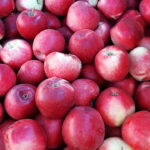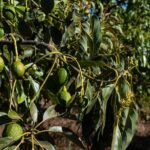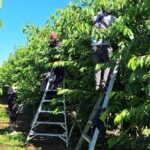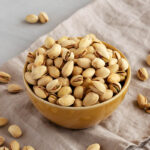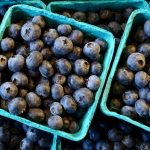The growth of cranberry producers outside North America

More than three decades ago, entrepreneur Warren Simmons, who had restaurants all along the California coast, offered cranberry juice at his locations, which became a typical cocktail. During that time, there was a drop in the supply of the fruit and, consequently, its price increased.
Faced with this, Simmons wanted to produce the fruit in another part of the world, because in the U.S. he could not find fields or land available with the characteristics needed for cranberry production, or they were extremely expensive.
So he began to look for land outside the United States, advised by a professor from the University of Wisconsin, the state that today leads the production of this berry in the country.
Fate made him find what he was looking for in Chile, specifically in the Valdivia area, in the Los Ríos Region, and in the Araucanía Region, which had the best soil and climatic conditions to produce this fruit.
Thus, in 1992, three in vitro varieties were brought to Valdivia, where the first greenhouse was built and plant reproduction began, reaching 40 million plants, and the first field was planted in Mafil with 25 hectares.
With this milestone, cranberry production began in the fields of Lanco, Panquipulli, and Loncoche.
To learn more about cranberry production in Chile, FreshFruitPortal.com spoke with Cran Chile's agricultural manager, Felipe Donoso, who commented that they have been growing by an average of 40 hectares per year. "In recent years we have achieved a growth of 700 hectares planted with cranberry," he said.
He added that "our production today is around 35 to 38 tons per hectare, which adds up to a total of 25,000 tons".
Cran Chile's agricultural manager pointed out that the company is the only producer of cranberry outside the United States and Canada, and that it has managed to grow it commercially.
Donoso explained that the climatic and soil conditions in Chile have been spectacular for the crop. "The agronomists and agricultural technicians working there are very good professionals, unlike the United States where families mainly manage it."
In addition, he indicated that they use very advanced technology, and "all this has made our production in Chile approximately 50% higher than the U.S. average."
He added that in recent years they have incorporated a lot of technology in irrigation, with the use of temperature sensors that have increased production.
He explained that cranberry has to be planted in large scale and it is a very expensive process, and that is why it has not been massified. "You need not only the knowledge, you also have to have the plants and make a large investment."
Challenges
Asked about the challenges facing cranberry cultivation, Donoso explained that a large amount of water is used in the harvest, "since the beds have to be flooded, so a lot of water is needed just for harvest day."
He emphasized that it is not a matter of the crop growing in water, nor in excess humidity, "on the contrary, the roots of the cranberry are in a layer of 17 cm of sand, because it needs a lot of drainage and the great challenge is water because the rains have been decreasing, the accumulation of snow. This is a very important issue for us, so we have been developing technology to irrigate better and more efficiently."
He commented that in some cases they have had to delay the harvest. It usually starts in mid-March, "but it is the driest month, due to the end of the summer. So we have had to postpone the harvest until April, when the first rains start."
Sustainability
Given the water consumed by the crop during harvesting, Cran Chile's agricultural manager specified that the area of sustainability is of relevance to the company: "We take water from the rivers that are on our property, but they are non-consultative rights, which means that you take the water, use it for harvesting and return it to the river."
"We try to move the water as quickly as possible and avoid any contamination back to the river," he said. In this sense, he explained that they are certified in Global Gap and "one of the main issues is to take care of the water and not contaminate our tributaries."
To take care of the water, they are working with local communities and also with forestry companies to replant and produce native trees, "because one of the most important ways of protecting water is to have native trees in all the basins and riverbanks."
Harvesting
Donoso explained that in the United States water use is much lower, because they use a harvester that uses a third of the water. "The system we have is a shake, which hits the plant a little bit so that it releases the fruit. If it were manual it would be impossible, so harvesting must be done with water."
He indicated that the fruit has four air chambers, so that is the way the fruit floats, but when it is ripe, "the plant has to be shaken to release the fruit and for that, we use special machinery."
Exports
Juan Yepes, marketing manager of Ocean Spray in South America and the Caribbean, told FreshFruitPortal.com that the 25,000 tons that are produced in Chile go directly to the Lanco plant to be processed in different formats: "We have dehydrated fruit, cranberry concentrate, puree, the seed itself within the dehydrated fruit. The bulk of the fruit that is processed in Lanco is for dried fruit and concentrate."
In this sense, he commented that 50% of the fruit is sent to Europe and the other 50% is exported to Asia and Latin America, the main markets served being Chile, Colombia, and Peru.
Consumers
Yepes explained that the largest consumption is in the United States, "however, in Latin America, in countries such as Puerto Rico, Jamaica, Mexico and Panama within the cranberry segment, we are the number one brand."
Given the properties of cranberries, Yepes pointed out that it is considered a superfruit, "due to the number of antioxidants, vitamin C and other properties that help to maintain the health of the urinary tract, the heart, intestinal and oral health, in other words, there are multiple benefits."
Related article: Cranberries benefit exercise performance
He added that experts recommend taking a daily dose of 8 ounces, which is 200 ml.
As for the consumer, Yepes commented that they are seeking to educate people so that they know that there is local production of cranberry and that they know that Chile is an important producer of the fruit: "We have to make Chileans feel proud of producing the fruit in their country."
Projection
Felipe Donoso concluded by saying that they are currently close to the production peak: "We have 700 hectares, around 25 hectares are new, therefore, we are going to reach around 600,000 barrels in the next two years and from there, it depends on our management to be able to maintain that production."

















